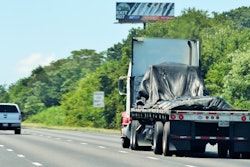Trucking news and briefs for Monday, September 28, 2020:
Proposal aims to clarify federal ‘independent contractor’ test
The Department of Labor’s Wage and Hour Division is proposing to better define independent contractor in the context of the Fair Labor Standards Act. That law has long governed employer wage and hour rules, such as minimum wage and overtime, and has defined employer/employee relationships for the purposes of applying those rules.
A new notice of proposed rulemaking would add a part to Title 29 of the Code of Federal Regulations. It would adopt interpretations to which courts and the DOL have long adhered when it comes to determining independent contractor status. It also would sharpen a multifactor economic-realities test into “five distinct factors,” and would shift greater weight in the determination to “actual practices” in independent contractor agreements as opposed to “what may be contractually or theoretically possible”.
For the purposes of litigating issues under the FLSA, there’s never been a clear definition of independent contractor, DOL said in its notice. That’s left it up to DOL and the courts in wage and hour-related cases to interpret the degrees to which any employer “suffers or permits” work by an employee/contractor.

DOL and federal courts have long analyzed the employer/employee relationship by looking to the degree of the worker’s “economic dependence” on the employer. The current multifactor test is designed to get to the root of whether a worker is “an independent contractor under the FLSA.” Yet DOL has concluded “the test’s underpinning and the process for its application lack focus and have not always been sufficiently explained by courts” or the DOL itself. That’s resulted in uncertainty for employers, employees and independent contractors.
The NPRM proposes a variation on the current approach. The proposal is aimed at decreasing litigation and encouraging innovation among employers, employees and contractors. The five economic-reality factors it envisions, consolidating some of the current ones and changing the weight of others, are:
- Nature and degree of the worker’s control over the work. Substantial control weighs toward independent contractors, with less control pointing in the opposite direction.
- Opportunity for profit or loss. Does the employee/contractor have “an opportunity to earn profits or incur losses” in his operation? Both being present weighs toward independent contractor. The NPRM would include in this factor aspects of the worker’s investment in the work, such as in the purchase of equipment.
- Skill required. This would be in place of the “skill and initiative” analysis used in some circuits, DOL said, which it believes “creates unnecessary and confusing overlaps with the control and opportunity for profit or loss factors.” More skill required, generally, leans toward an independent contractor.
- Permanence of the working relationship. Stronger/longer ties are evident of a more employee-like relationship. This factor does not require analysis of the exclusivity of the relationship, which is covered in Factor 1 on control.
- Integrated unit. This seeks to require analysis of the extent to which a worker is integrated directly into the business of the employer. This is to be distinguished from how some courts have interpreted the “integral part” factor, DOL said, mistakenly interpreting it as simply how “important” a worker is to the business.
The proposal would place the greatest emphasis on factors 1 and 2, with the other factors carrying less weight. “As a result of their greater weight, if both core factors point towards the same classification, their combined weight is substantially likely to outweigh the combined weight of other factors that may point towards the opposite classification,” DOL said.
The comment period on the proposal is open through Oct. 26 via the Federal Register‘s comment portal, where you can also read the proposal in full, at this link.
FMCSA accepting applications for new driver subcommittee
The Federal Motor Carrier Safety Administration is accepting applications from truck drivers to be part of its new commercial motor vehicle driver subcommittee – a panel of truck and bus drivers who will provide feedback to the agency on critical issues facing the industry.
To apply, drivers can submit a resume detailing their driving experience and a personal statement outlining how their qualifications and experience as a driver make them suitable for membership.
Applicants can also submit any letters of recommendation, but it is not required.
Drivers can email these documents directly to [email protected] by Friday, Oct. 16th, to apply.
Self-driving tech company’s request for longer HOS denied
The Federal Motor Carrier Safety Administration denied a request from self-driving technology company Pronto.ai that would have allowed certain drivers to extend their daily hours of service.
Pronto petitioned FMCSA to allow its motor carrier customers to drive up to 13 hours of a 15-hour period following 10 consecutive hours off-duty, as long as the trucks were equipped with the Copilot by Pronto advanced driver assistance systems (ADAS), the SmartDrive Video Safety Program and operating under certain other safeguards.
FMCSA denied the request because it said it could not ensure that the waiver would be as safe as current regulations.
“The premise that the use of advanced technology should reduce the workload on drivers appears reasonable on the surface, but the absence of data or information to quantify the impact on driver fatigue and alertness leaves the agency with no choice but to deny the application,” FMCSA said in its denial.
Wabash recalling small number of van trailers for side skirt issue
Wabash National is recalling approximately 218 model year 2019-2021 van trailers with flat bottom floors that are equipped with aerodynamic skirts, according to National Highway Traffic Safety Administration documents.
The company says the skirts attached to the vans could come loose. Wabash has notified owners, and dealers will rework the safety tether assembly to keep the skirt attached for free.
Owners can contact Wabash’s customer service at (765) 771-5404 with recall number B20012. NHTSA’s recall number is 20V-551.










